#cotton cloth
Text
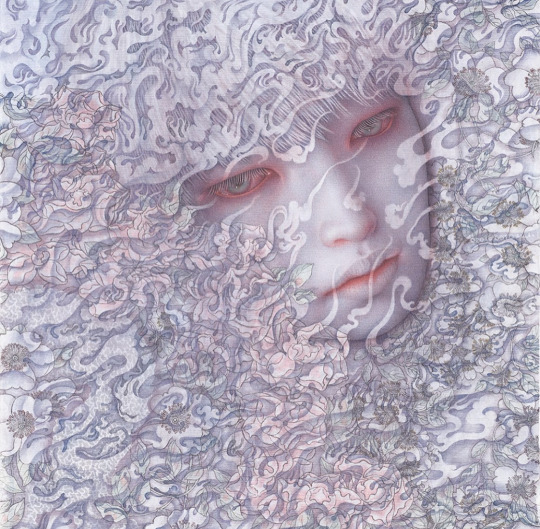

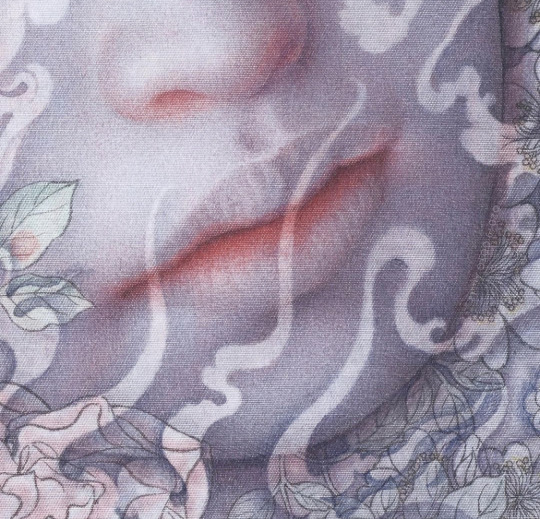
'忘れられた夢たちのたくらみ IV' Illustrated By: Atsuko Goto (2018)
#忘れられた夢たちのたくらみ IV#forgotten dreams#atsuko goto#2018#water color#cotton cloth#fantasy#paintings#illustrations#japan#details
497 notes
·
View notes
Photo
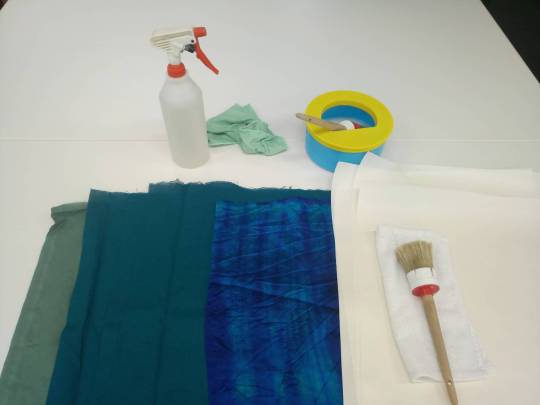
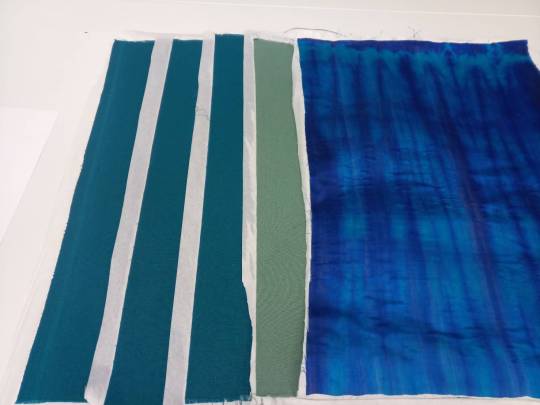
Making paper backed cloth for bookbinding
I tried my hand recently on making my own book cloth, not because I can’t get any, but because there are so many fun patterns and colours around. To be honest, I expect bought book cloth to be superior for all the ways it’s finished to be more resilient towards dirt and and such, but that doesn’t say self made cloth is bad at all!
There are different ways to achieve a paper backing, I went for the backing with paper and starch paste because
a) if I mess up I can always do it over no harm done, no material lost
b) I have my doubts about the durabilty of heat activated glues and their durability
c) using paste is just so much cheaper
So first up was cooking starch paste.
I don’t have a ratio for that. I put a spoon of starch into a pot, add some water to get rid of any lumps and let it soak a few minutes (usually just long enough to get some water boiling), then I slowly pour over the boiling water while stirring the starch and at some point it turns from white to translucent and lumpy and I stop when there’s a certain thickness.
When the paste has cooled it press it through a mesh and add some more water as needed. (It’s usually rather thick at that point.)
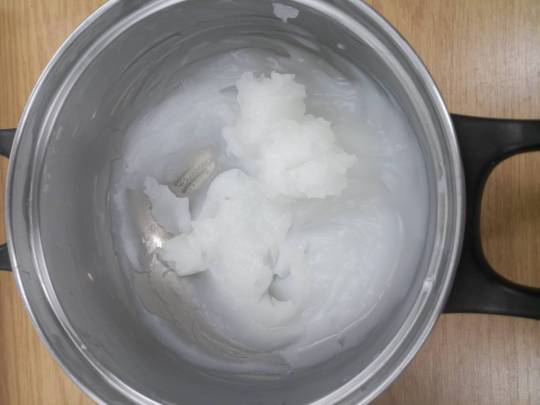


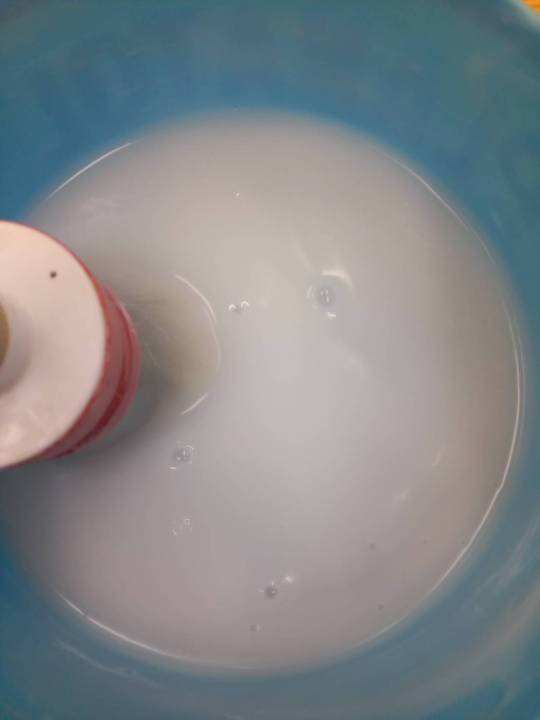
(and yes, my mesh is a nylon sock. I don’t own a fancy horeshair sieve and this stores much easier)
Then I prepared my cloth and the paper I was going to use for backing. The final sheets have the warp and the grain direction run parallel for better usage and less warping (at least that’s the theory, I have yet to use that selfmade cloth to find out).
The limiting factor here was the width of the web of tissue paper I used. Because I also need the paper to be 2,5cm -5cm larger than the piece of fabric in order to get a smooth sheet of book cloth. Having around 5cm for an edge makes it far easier to get the paper on the cloth even if there is a little skew.
I moistened the pre-washed, but un-ironed fabric (I have some cotton and synthetic fabric, none of them are elastic) and smoothed it down to a flat surface that won’t be needed for a couple of hours (preferably over night).
Glas would be best but I didn’t have that, so I picked two work benches for that.
I used plenty of water, which was a good thing, I’d say because even when smoothed down, a bit more water made the synthetic fabric wrinkly again.
I sprayed the later front side, turned the cloth around and sprayed the backside. Brushed the water in with a clean brush until the fabric clung smooth to the surface.

Then I spread the paste on the paper and put it on top of the backside of the fabric, brushed down the paper on top of the cloth with a clean and dry brush to get rid of any airbubbles. Starting in the middle of the fabric and brushing along the long side to the sides to push out the air. Then I gave it a brush down along the short side too. (the slightly brighter stretches of paper on the left are where the air is still caught under the paper, on the right is the paper all smoothed down)
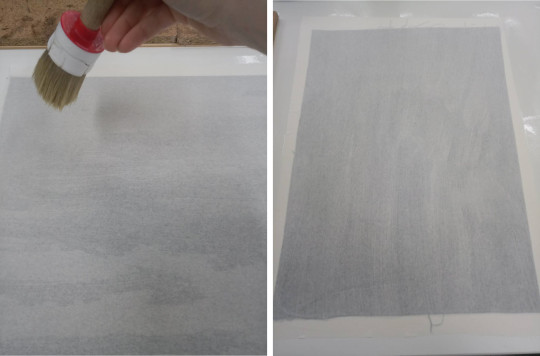
Sometimes I had to lift the edfe of the paper carefully to let out some air or get rid of a too large wrinkle that was building up in the paper.
I weighed the cloth and paper down with blotting paper and blotting board as well as some wooden boards, but only to make them dry faster.
In consideration of the table surface I cut only one corner loose after the coth had dried and loosened the rest by running a very flat bone folder all around the edges.
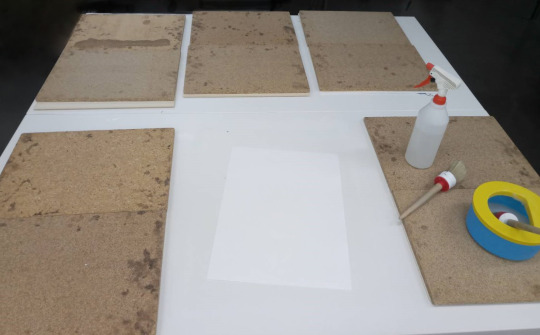
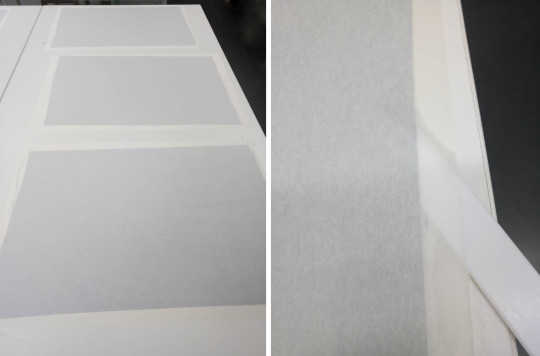
I had great success with the cotton fabric. only minimal bleed through of paste at the edges and a slight smudge in the middle of one sheet.
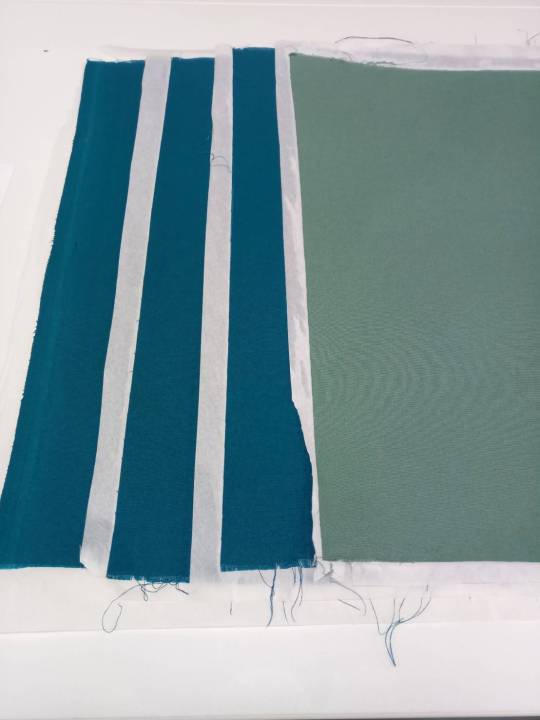
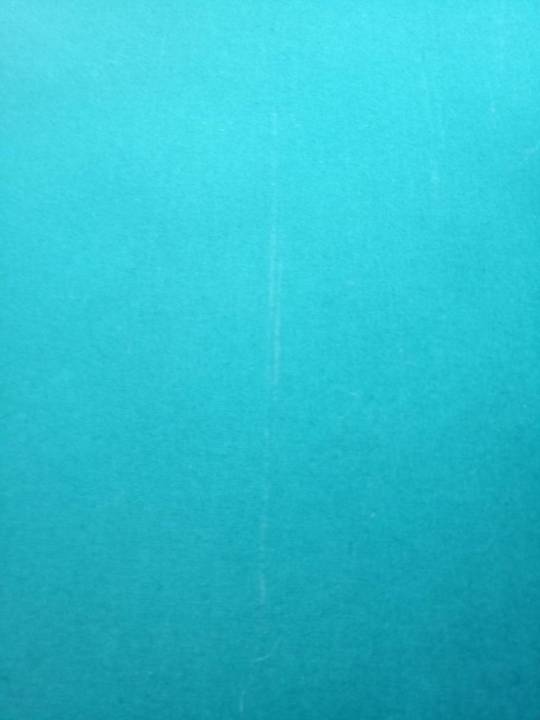
the synthetic fiber... not so much. While others before that one had taken well to the paste, the one with those shades of blue and purple did not. it was a mess to smooth down and apparently not smooth enough. when I pried it loose it was all bubbly and a lot of fabric was not adhered to the paper backing.
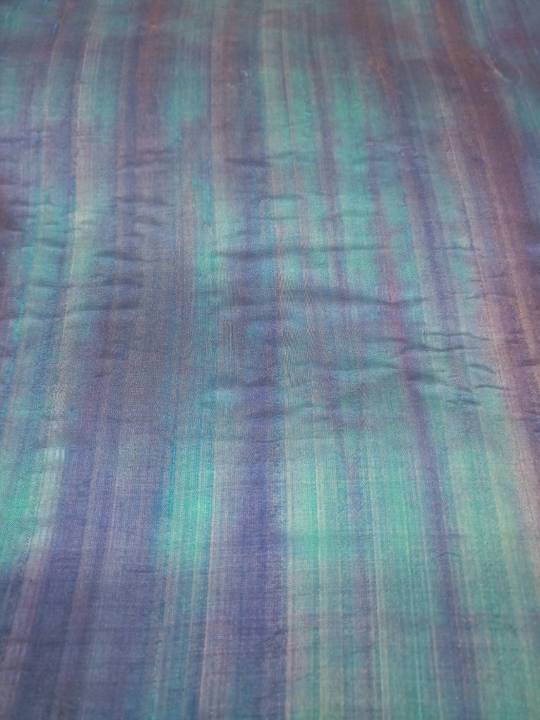
I scrapped that one, I pulled the paper off, washed it out again and this time pressed it while drying, so it would be smooth before the next attempt.
Cleaning up the surface was easy by the way. It was all plastered with dried starch paste, but I simply sprayed it with water, let it sit for a bit and wiped it off. No scrubbing needed at all.
#bookbinding#paper backed cloth#book cloth#making starch paste#cotton cloth#synthetic fiber cloth#again this has gotten more lengthy than I anticipated...
56 notes
·
View notes
Text
Sustainable Fabric Supplier: Pioneering the Green Revolution in Textiles
In a world where environmental consciousness is no longer a buzzword but a way of life, the textile industry is undergoing a remarkable transformation. Sustainable and eco-friendly fabrics are at the forefront of this revolution, and finding the right sustainable fabric supplier is crucial for businesses committed to making a positive impact on the environment. In this blog, we will delve into the world of sustainable fabrics, the role of a sustainable fabric supplier, and how this industry is driving the green revolution.
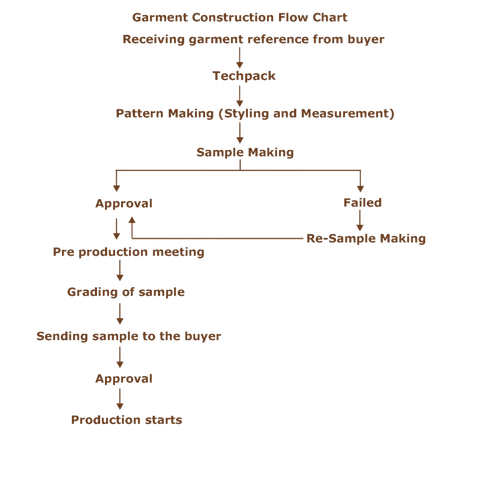


3. *Tencel and Modal*: These fabrics are produced from sustainably sourced wood pulp, often from eucalyptus and beech trees. The closed-loop production process minimizes waste and water usage.
4. *Recycled Fabrics*: These include textiles made from recycled plastic bottles or post-consumer textiles, reducing the need for virgin resources.
5. *Khadi*: Khadi is handspun and handwoven fabric, and its production supports traditional craftsmanship and rural livelihoods.
6. *Peace Silks*: Also known as Ahimsa silk, these are produced without killing silkworms, making them a cruelty-free alternative.

The Role of a Sustainable Fabric Supplier
A sustainable fabric supplier plays a critical role in bridging the gap between environmentally conscious businesses and the growing demand for sustainable textiles. Here are some key responsibilities of a sustainable fabric supplier:
Curating a Diverse Range of Sustainable Fabrics
One of the primary responsibilities of a sustainable fabric supplier is to offer a wide variety of eco-friendly textiles. This ensures that businesses can find fabrics that align with their specific needs, whether it's for clothing, home textiles, or other applications. A diverse inventory of sustainable fabrics enables designers and manufacturers to make eco-conscious choices without compromising on quality or aesthetics.
Ensuring Transparency and Traceability
Transparency is essential in the world of sustainable fabrics. A reputable supplier will provide detailed information about the sourcing and production of each fabric. This includes details about the cultivation, processing, and certification of the textiles. Transparency ensures that the fabrics meet the required environmental and ethical standards.
Meeting Certification Standards
Sustainable fabrics often come with certifications that validate their eco-friendliness. These certifications, such as Global Organic Textile Standard (GOTS), OEKO-TEX, and Fair Trade, provide assurance that the fabrics are produced with minimal harm to the environment and fair labor practices. A reliable sustainable fabric supplier will stock fabrics with relevant certifications, making it easier for businesses to choose the right materials.
Providing Custom Solutions
Different businesses have different needs. A sustainable fabric supplier should offer customization options that allow businesses to tailor fabrics to their specific requirements. Whether it's custom colors, blends, or finishes, these options enable brands to create unique and sustainable products that resonate with their target audience.

Supporting Sustainable Practices
Collaboration with a sustainable fabric supplier is more than just a transaction. It's a partnership in supporting sustainable practices. Suppliers often work with manufacturers to ensure responsible production and offer guidance on reducing waste and optimizing processes.
Sustainable Fabrics: A Game Changer for Fashion and Beyond
Sustainable fabrics are not limited to a niche market; they are gaining momentum in the mainstream fashion industry. Brands are increasingly adopting sustainable textiles as consumer awareness about the environmental impact of fast fashion grows. Sustainable fashion is no longer a trend; it's a paradigm shift.


Choosing the Right Sustainable Fabric Supplier
Selecting the right sustainable fabric supplier is a decision that can impact the trajectory of your business. Here are some factors to consider when evaluating potential suppliers:
1. Product Range:* Look for a supplier with a wide range of sustainable fabrics, so you have a variety of options to choose from.
2. Certifications:* Ensure the supplier's fabrics are certified by recognized organizations, as this provides assurance of their sustainability.
3. Transparency:* The supplier should be transparent about the sourcing and production of their fabrics. They should provide.Share
Back to blog
Leave a comment
Name *Email *Comment *
Please note, comments need to be approved before they are published.
#organic cotton fabric for baby clothes#organic fabric dye#organic cotton fabric suppliers in india#fabric and cotton#fabric from cotton#clothing brands from india#cotton cloth fabrics#cotton material fabric#fabric cotton fabric#cotton fabric#fabric for lehenga#cotton cloth#fabrics stores#fabrics for kurtis#cotton cloth fabric#knitwear material#online fabrics store#knitted fabric material#fabric online stores#cotton materials online#knitted fabric#giza cotton#best indian clothes brand#printmaking fabric#linen fabric linen fabric#linen fabric material#linen cloth material#brands of clothes#brands for clothes#brands in clothes
0 notes
Text
Light Brown Flower Print Cotton Fabric
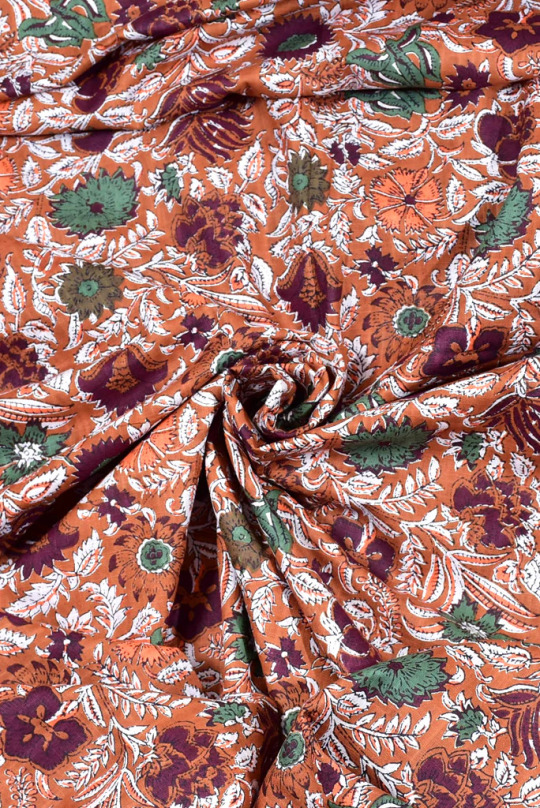
Cotton cloth, made from the purest cellulose fibers, is a soft and fluffy material that is grown in protective cases. Its use dates back to prehistoric times, with evidence of its use found in the Indus Valley Civilization. The cotton fibers are spun into yarn or thread to create a breathable textile, which is why it is the most widely used natural fiber cloth in the fabric market today. Qutun is dedicated to connecting buyers of cotton fabric with the Indian market through online means.
0 notes
Text
A table runner can vary from being as simple as a cotton cloth to having an intricate detailed runner. It creates a dedicated space for decor while adding patterns and textures to enhance the look and feel of your table. Throwing the runner in the middle of the table instantly elevates a mood and definitely adds a personalized touch.
If you’re the one who likes to keep it simple, just add a thin runner through the middle showcasing your stunning table on the sides. If you like add a little spice, layer your runner on top of table linen to give a sense of contrast and allowing the table runner to stand out.
0 notes
Text

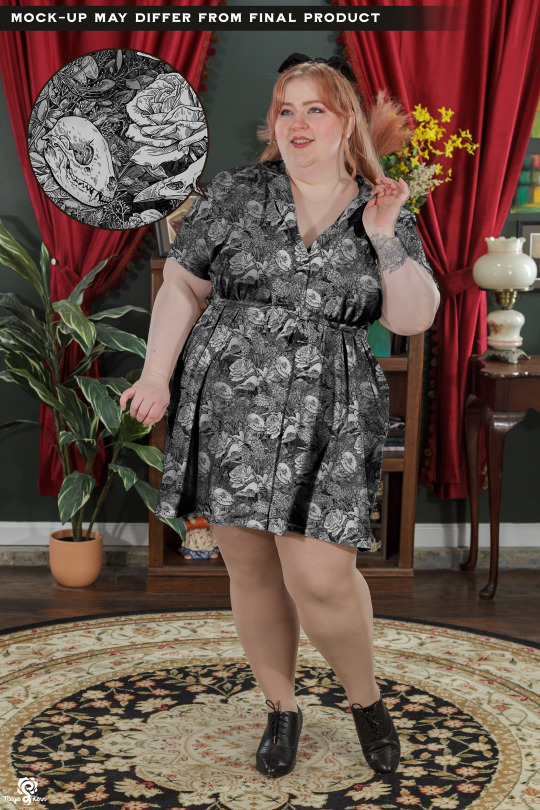

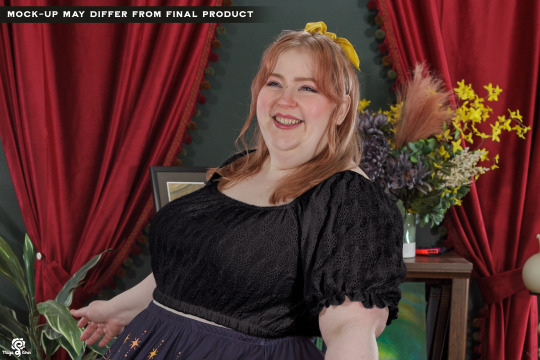
preorders are live now!! ✨
this launch includes our new organic cotton button-ups in our funeral design, our button-up dress in our funeral design, and the picnic crop top in both white and black colors.
preorders will be open until may 12th!
you can get these on my store!
388 notes
·
View notes
Text
I brought the skirt I'm working on to the museum yesterday, to get some hand-sewing done at the desk between tours (a lot of my projects end up being done half-hand and half-machine, because I love working on the train or during downtime at my various jobs). you know, the one made of the God-Tier WoolTM
when I invited my coworker, a 19-year-old student, to feel the fabric- in that "OH MY GOD FEEL THIS!!!" tone -her jaw dropped
she had never felt soft, light- or even medium-weight wool in her life. she previously thought, it turns out, that all wool was coarse, heavy, and itchy. she couldn't stop stroking it with that awestruck look on her face
truly, fuck fast fashion and the modern garment industry. for depriving us of sensory richness in our clothing so thoroughly that most of us don't even know what we've lost
#clothing#fashion#I've handled things in museums that you just can't get today. like at all. or you have to pay the stars and the moon for something#that used to be commonplace#and then you go to Target or even thrift stores and it's mostly just. 500 shades of polyester. plus MAYBE two types of cotton#everything feels like jersey no matter what it's actually made of. nothing has substance or structure#Hell Clothing truly
922 notes
·
View notes
Text
Atem and Yugi going to visit egypt except Yugi insists on wearing his black leathers and Atem is like "you know the only reason that didn't kill you last time is because of my magic bullshit right" and Yugi scoffs at him because "goths never get hot, pharaoh, it's a fact of nature" and then within 15 minutes of being in Cairo he's hunkered in the shade, head in his hands melting from the heat and Atem is standing all smug over him like "so how's that going for you partner"
#yugioh#puzzleshipping#don't worry atem packed extra sets of loose linen and cotton clothes and hats and sunscreen for him
121 notes
·
View notes
Text


Finally finished washing, mending, ironing and polishing my thrift store finds, so please behold my first ever cosplay 😁
I got two pairs of shoes, one men's pair which is more worn but fits the cosplay better, and a unisex one that I just absolutely adore for everyday wear as well!


#apparently you can iron out creases from leather shoes!#had to bury some loose threads around the 'pocket' welts and buttons of the waistcoat too#otherwise the clothes are in great shape :)#and they fit like a glove :D though the coat doesn't quite agree with sliding over cotton shirts#still looking for a bowtie I'll be happy with#maddie's go tag#good omens#the shoes looked nowhere near as good when I got them (very cheap)#but that's the thing with leather: a bit of care and it's as good as new!#I'll be getting shoe blocks to keep them going for many years to come#no face cause this angle is not flattering for someone who has no chin (and unwashed hair) 😂#cosplay#aziraphale
826 notes
·
View notes
Note
How did cotton win over linen anyway?
In short, colonialism, slavery and the industrial revolution. In length:
Cotton doesn't grow in Europe so before the Modern Era, cotton was rare and used in small quantities for specific purposes (lining doublets for example). The thing with cotton is, that's it can be printed with dye very easily. The colors are bright and they don't fade easily. With wool and silk fabrics, which were the more traditional fabrics for outer wear in Europe (silk for upper classes of course), patterns usually needed to be embroidered or woven to the cloth to last, which was very expensive. Wool is extremely hard to print to anything detailed that would stay even with modern technology. Silk can be printed easily today with screen printing, but before late 18th century the technique wasn't known in western world (it was invented in China a millenium ago) and the available methods didn't yeld good results.
So when in the late 17th century European trading companies were establishing trading posts in India, a huge producer of cotton fabrics, suddenly cotton was much more available in Europe. Indian calico cotton, which was sturdy and cheap and was painted or printed with colorful and intricate floral patters, chintz, especially caught on and became very fashionable. The popular Orientalism of the time also contributed to it becoming fasionable, chintz was seen as "exotic" and therefore appealing.
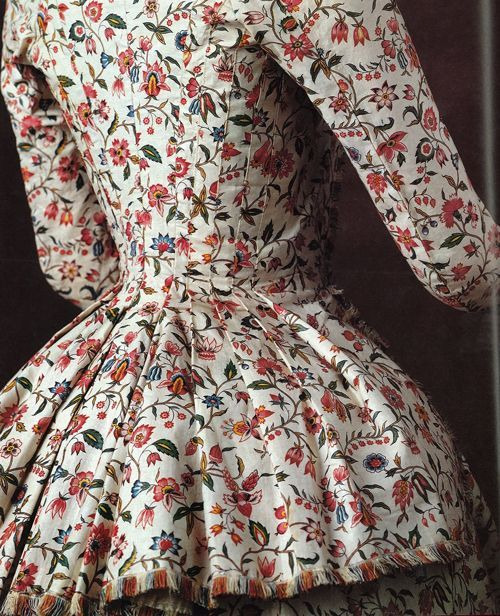
Here's a typical calico jacket from late 18th century. The ones in European markets often had white background, but red background was also fairly common.
The problem with this was that this was not great for the business of the European fabric producers, especially silk producers in France and wool producers in England, who before were dominating the European textile market and didn't like that they now had competition. So European countries imposed trade restrictions for Indian cotton, England banning cotton almost fully in 1721. Since the introduction of Indian cottons, there had been attempts to recreate it in Europe with little success. They didn't have nearly advanced enough fabric printing and cotton weaving techniques to match the level of Indian calico. Cotton trade with India didn't end though. The European trading companies would export Indian cottons to West African market to fund the trans-Atlantic slave trade that was growing quickly. European cottons were also imported to Africa. At first they didn't have great demand as they were so lacking compared to Indian cotton, but by the mid 1700s quality of English cotton had improved enough to be competitive.
Inventions in industrial textile machinery, specifically spinning jenny in 1780s and water frame in 1770s, would finally give England the advantages they needed to conquer the cotton market. These inventions allowed producing very cheap but good quality cotton and fabric printing, which would finally produce decent imitations of Indian calico in large quantities. Around the same time in mid 1700s, The East Indian Company had taken over Bengal and soon following most of the Indian sub-continent, effectively putting it under British colonial rule (but with a corporate rule dystopian twist). So when industrialized English cotton took over the market, The East India Company would suppress Indian textile industry to utilize Indian raw cotton production for English textile industry and then import cotton textiles back to India. In 1750s India's exports were mainly fine cotton and silk, but during the next century Indian export would become mostly raw materials. They effectively de-industrialized India to industrialize England further.
India, most notably Bengal area, had been an international textile hub for millennia, producing the finest cottons and silks with extremely advance techniques. Loosing cotton textile industry devastated Indian local economies and eradicated many traditional textile craft skills. Perhaps the most glaring example is that of Dhaka muslin. Named after the city in Bengal it was produced in, it was extremely fine and thin cotton requiring very complicated and time consuming spinning process, painstakingly meticulous hand-weaving process and a very specific breed of cotton. It was basically transparent as seen depicted in this Mughal painting from early 17th century.
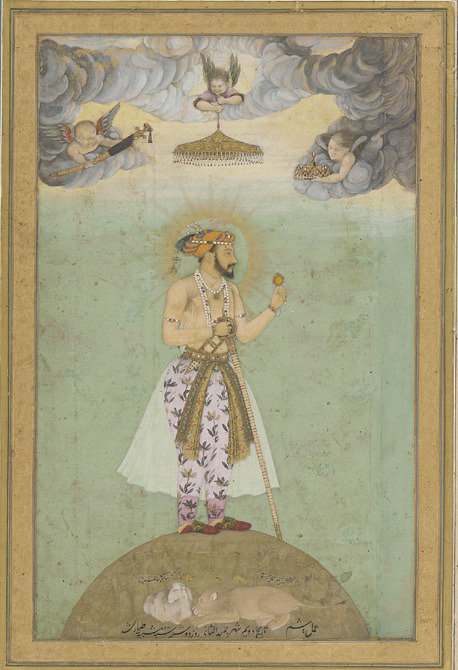
It was used by e.g. the ancient Greeks, Mughal emperors and, while the methods and it's production was systematically being destroyed by the British to squash competition, it became super fashionable in Europe. It was extremely expensive, even more so than silk, which is probably why it became so popular among the rich. In 1780s Marie Antoinette famously and scandalously wore chemise a la reine made from multiple layers of Dhaka muslin. In 1790s, when the empire silhouette took over, it became even more popular, continuing to the very early 1800s, till Dhaka muslin production fully collapsed and the knowledge and skill to produce it were lost. But earlier this year, after years lasting research to revive the Dhaka muslin funded by Bangladeshi government, they actually recreated it after finding the right right cotton plant and gathering spinners and weavers skilled in traditional craft to train with it. (It's super cool and I'm making a whole post about it (it has been in the making for months now) so I won't extend this post more.)


Marie Antoinette in the famous painting with wearing Dhaka muslin in 1783, and empress Joséphine Bonaparte in 1801 also wearing Dhaka muslin.
While the trans-Atlantic slave trade was partly funded by the cotton trade and industrial English cotton, the slave trade would also be used to bolster the emerging English cotton industry by forcing African slaves to work in the cotton plantations of Southern US. This produced even more (and cheaper (again slave labor)) raw material, which allowed the quick upward scaling of the cotton factories in Britain. Cotton was what really kicked off the industrial revolution, and it started in England, because they colonized their biggest competitor India and therefore were able to take hold of the whole cotton market and fund rapid industrialization.
Eventually the availability of cotton, increase in ready-made clothing and the luxurious reputation of cotton lead to cotton underwear replacing linen underwear (and eventually sheets) (the far superior option for the reasons I talked about here) in early Victorian Era. Before Victorian era underwear was very practical, just simple rectangles and triangles sewn together. It was just meant to protect the outer clothing and the skin, and it wasn't seen anyway, so why put the relatively scarce resources into making it pretty? Well, by the mid 1800s England was basically fully industrialized and resource were not scarce anymore. Middle class was increasing during the Victorian Era and, after the hard won battles of the workers movement, the conditions of workers was improving a bit. That combined with decrease in prices of clothing, most people were able to partake in fashion. This of course led to the upper classes finding new ways to separate themselves from lower classes. One of these things was getting fancy underwear. Fine cotton kept the fancy reputation it had gained first as an exotic new commodity in late 17th century and then in Regency Era as the extremely expensive fabric of queens and empresses. Cotton also is softer than linen, and therefore was seen as more luxurious against skin. So cotton shifts became the fancier shifts. At the same time cotton drawers were becoming common additional underwear for women.
It wouldn't stay as an upper class thing, because as said cotton was cheap and available. Ready-made clothing also helped spread the fancier cotton underwear, as then you could buy fairly cheaply pretty underwear and you didn't even have to put extra effort into it's decoration. At the same time cotton industry was massive and powerful and very much eager to promote cotton underwear as it would make a very steady and long lasting demand for cotton.
In conclusion, cotton has a dark and bloody history and it didn't become the standard underwear fabric for very good reasons.
Here's couple of excellent sources regarding the history of cotton industry:
The European Response to Indian Cottons, Prasannan Parthasarathi
INDIAN COTTON MILLS AND THE BRITISH ECONOMIC POLICY, 1854-1894, Rajib Lochan Sahoo
#i have fixed the wording in the beginning so it doesn't sound like i'm saying cotton in general dyed better than wool or silk#answers#fashion history#historical fashion#history#textile history#dress history#historical clothing#indian history#colonial history#indian textiles#cotton#slavery
2K notes
·
View notes
Text
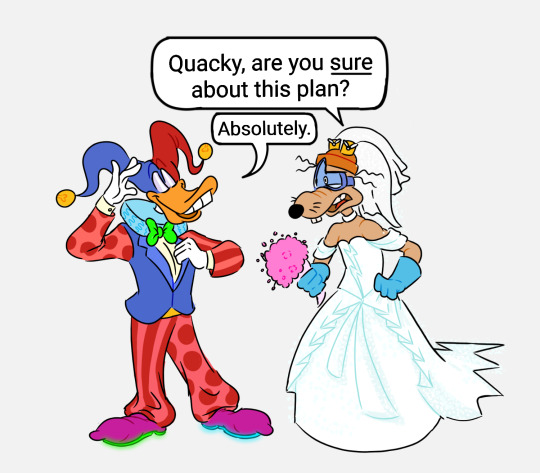
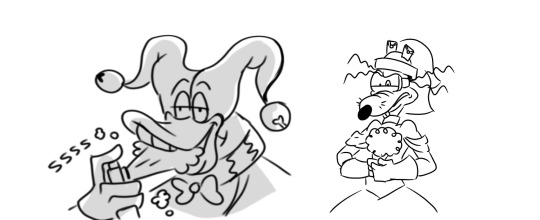
I'm sure this would happen at some point, just two villains and their evil plans, sure
#the bouquet is actually cotton candy#darkwing duck#quackerjack#megavolt#quackervolt#disney#my art#quackerjack probably made their clothes yes
629 notes
·
View notes
Text
thinking about how I had a few folks at my last market suggest to me (kindly and with good intentions) that I make and sell some versions of the hand knit cardigan I was wearing because people would "totally pay $300 for that!"
I appreciated the sentiment, but people don't understand what goes into handmade clothes! I don't use a knitting machine. Every stitch in that garment is created by hand on needles, and the sleeves were brioche. Even using inexpensive acrylic yarn for the whole project, and accounting for the HUGE sleeve stitches (saving me time making the sleeves)—the material cost was $55 and the labor was well beyond that.
Let's conservatively estimate the cardigan took me 30 hours to create. Currently, when pressed to put a dollar amount to my time, I use the living wage as a baseline and then go up from there $1/hour for every year I have been actively practicing that particular skill. In the case of knitting that would be 11 years, and the current living wage in my area is approximately $23/hour. Setting aside the fact that this is calculated based on a 40 hour work week and I don't believe that is ethical or sustainable, we'll just leave it at $34/hour. That would make labor alone $1,020.
This brings the "production cost" to $1,075.
Items are not sold at production cost because that would leave your profit margin at 0%. This is not sustainable because it costs money to run a business (think things like paying for computer repairs, buying tools, the tablecloth you use at markets, paying for a website, etc.). Realistically to cover business costs and still come out with a 7% "net" profit margin, which is just a number pulled from averages in the clothing retail business...
... I'd have to sell that cardigan for $1,350.
So yeah! Something to think about when you see the price of clothes that are handmade. :o)
#and this is for something made with PLASTIC yarn!! not cotton! not wool! not really ethical even though it's technically#slow fashion#this is why garments were originally intended to last a LIFETIME or even generations!!!!#they are not cheap! clothes should proportionately be one of the singularly most expensive things we own btw!!#thank you for coming to my talk#I will be ranting again about this in the future I'm sure#handmade fashion#small business#fast fashion#shop small#etsy seller#knitting#fiber art#handmade life#fashion#indie fashion#style#strawberrum chirps
98 notes
·
View notes
Text
its still guenuinely baffling to me to think that someone can go "oh i need new clothes" and the first thing they do is type www dot shein dot com
#like labor and environmental impact aside#which is a big fucking aside#youre telling me ur cool with wearing some cheap fucking polyester dinky doo fucking dollar tree knockoff barbie doll clothes???????????#do you not care about what goes on your body. do you not like yourself#do you really think you dont deserve better#you dont think you deserve something thats 100% cotton
68 notes
·
View notes
Text
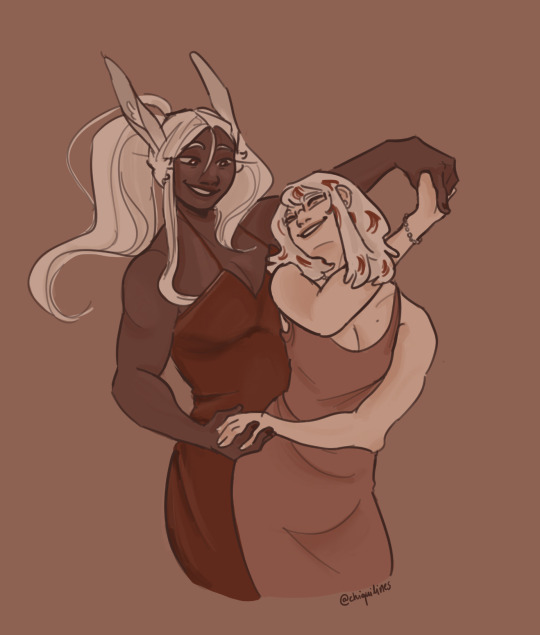
Lil miryumi dancing post because the brainrot is real, ladies and gentlemen
#This technically takes place within the hero gala AU from the miryumi AU post a few months back#i love giving them dresses#and making them dance#cause they were made to dance together#rumi likes lighter shinier cloths cause she was blessed by the gods#and fuyumi likes softer more opaque cloths like cotton#cause theyre cosier#stiff cloth and stretchy cloth couple#dress lore if u even care🙄#anyways thats them#working on a redraw of a comic i made of them for the villain!fuyumi au#but just the lineart took me an hour so itll be a while#mwah#miryumi#mirko#usagiyama rumi#fuyumi todoroki#mha#bnha#my hero academia#wlw#chiquilines draws
311 notes
·
View notes
Text
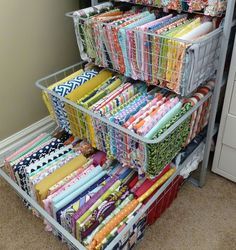
How to Build a Fabric Stash without Breaking the Bank
Fabric can be expensive but it doesn’t have to be. If you are not stuck on Name Brands or Specialty Fabric Store Exclusives here are some ways to build your fabric stash without costing an arm and a leg. I have made many beautiful quilts using various fabrics from various supplies. And I believe that the quality is not just in the fabric you use but also in your stitch work and seams sizes. If your seams are less than a ¼” they will not hold (personally I prefer to use a ½” seam allowance). If you are not securing your thread ends, your stitch work is going to come undone. So be sure to watch these things too.
Look for fabric at your local Thrift Store (Goodwill, Value Village, etc.)
I have found some wonderful fabrics in various sizes, notions, storage items and more at my local Thrift Stores. I have even found unfinished quilt tops that I have brought home and added a backing to then quilted. Remember that almost any size fabric remnant can be added to other remnants to make some wonderful scrappy quilts so save your own remnants after making a quilt, you may be able to use it later in another quilt.
Look for local Fabric Sales held by Quilting Guilds in Your Area.
We have 2 near me every summer.One charges $2 per pound for any fabric. The second one charges $2 per yard for any fabric. Both also sell batting, notions, books, machines, tools, and more.
Look for fabric on Facebook Marketplace, Nextdoor and other sites.
I sell extra fabric on Marketplace and Nextdoor. I have also found several ladies near me selling fabric that I have purchased. And some I have purchased with shipping to me.
Look for older 100% Cotton Sheets at your local Thrift Stores.
Back in the 1800’s and early 1900’s, Quilts were not show pieces. They were real functional blankets that were made from any and all fabrics they could get, usually used clothing. I think there is no reason why we cannot still do that instead of buying expensive fabrics. I have often used clothing, sheets, curtains, and other linens to make some wonderful, usable quilts. And there are some wonderful patterns you can use for quilts in bedsheets from the 1980’s and 1990’s. Note: I always wash anything from a Thrift Store before I use it.
Watch for Fabric Sales and Coupons for Joanns, Hobby Lobby and other Fabric & Craft Stores.
I know some quilters believe that the fabric from Joanns & Hobby Lobby is poor quality but I have not found any bad fabric from these stores. We do not have a “Quilting” store close to me and because I’m handicapped, I will not drive an hour or more just to buy expensive fabric. If I did that, I wouldn’t be able to afford to quilt. I will also buy fabric from Walmart but I am more careful with my selection there as most fabric at Walmart is good but I have had one or two pieces that I felt were poorer quality.
Watch for Fabric Sales and Coupons for your Local Quilt Shop.
Quilt shops will also have occasional sales and/or coupons so if you prefer to shop at these locations take notice of when they have sales. Also ask if they ever give discounts to seniors or military.
Use New or Older Clothing.
I have made a lot of beautiful Memorial Quilts from a loved one’s clothing and T-Shirt quilts. I will use jeans, work shirts, uniforms, flannel, cotton, polyester and even some knits. These can be a little trickier to work with because they are often stretchy fabrics but they will add a wonderful texture and visual variance to your quilts. I recently found a pair of cotton pants with Mickey Mouse on them. I fell in love with them because they were so colorful, and I love bold colors. I found several other cotton fabrics that matched the colors in the Mickey pants and made a bold colorful quilt!
Rethink Your Backing Fabric
No one ever said your quilt backing had to be all New Cotton. You can use Fleece, Flannel or Bed Sheets as well. On many occasions I have found some wonderful fleece blankets on clearance and used these for my quilt backing. Joanns right now has a great clearance sale on Flannel fabric. The best part about using some of these is that you can get then in a wider width so you may be able to make your backing in all one piece instead of 2 or more like when using regular cotton (unless you want your backing to be in various colors/patterns). You can also use new or older cotton bed sheets for a quilt backing. Again, you can make your quilt backing in one solid piece with a sheet!
Check the Clearance Section for Your Favorite On-Line Stores
I have several on-lines stores that I love to shop from (e-Quilter, Missouri Star, etc.) but sometimes they can be expensive so I always check the clearance section of these stores. There are times I will find some beautiful fabrics on clearance so will purchase it then look for matching piece everywhere else so I can get the best deals. Also check for on-line sales from Joanns, Hobby Lobby and other on-lines stores that sell fabric and/or sheets.
Check Out Your Local Garage, Moving and Estate Sales
I have found some of the best deals at moving and estate sales because often the seller is willing to bargain with you. I once found an estate sale where a family was selling off all their mother’s quilting and sewing items because she had passed away and none of then sewed. There was more fabric and notions than I would have used in a year so I found lots of thread and items I purchased at a great price.
Note on Batting
I know that many quilters believe that the only batting you should use is expensive cotton batting. I disagree. There are many forms of batting. Cotton/Poly blends, Polyester, and Fleece. I love cotton batting but cotton will break down quicker than polyester and I want my quilts to last a lifetime so for most of my quilts I actually use Polyester more often than not. I have taken the backing off many older quilts to do repair work and the cotton batting inside was all balled up and a real mess.
Now when I am doing the Quilt-as-you-Go method I use a Fleece batting. The fleece can be cut into smaller pieces, fabric added to the top and then sewn back together to make wonderful quilts. And the batting doesn’t get stuck in my machine.
Shop Around for your batting to find the best deals. Sometimes Joanns has a sale on batting but the best price I have found so far has been Walmart on-line. I can buy a 96” x 9 yard Bolt of Poly Batting for just $30 on Walmart on-line. This bolt will make 4+ quilts depending on the size of the quilt and I will have lots of left overs for smaller projects like pillows, etc. For me the best part is that because it’s 96” wide, I don’t have to piece together my batting before I can sandwich my quilt!
#crafts#gifts#decor#sewing#quilting#briar rose quilts#bedding#shopping#quilters of tumblr#fabric#fabric stash#quilts#fabric art#textile art#clothing#sheets#sales#fleece#cotton#batting
59 notes
·
View notes
Text
Fabric types and summer heat
The world is seeing record temperatures again. A lot of people find little comfort in their summer wardrobe these days, so it's important to be aware of how fabric types can influence your well-being in hot weather.
The following list of fabrics is by no means exhaustive, but it covers the basics.
Some of the fabrics mentioned below are expensive when bought new. You'll often find them for cheap in second-hand shops and on thrifting platforms though. I'm literally wearing a €5 linen underskirt, a €1 silk top, and a €7 silk summer dress right now, just to give an example.
General notes:
If you don't know where to start, try to stick to light-weight fabrics made of natural fibres. Look for light colours and open weaves.
You might be tempted to cover as little skin as possible in order to keep cool, but this leaves your skin vulnerable to sunburn. A thin layer of linen will often be more efficient at keeping you cool than leaving your skin bare.
Don't forget to wear sunscreen! Even if your skin type doesn't burn easily, it will still lower your chances of skin cancer. Look into sunscreens for children if you have sensory issues: they tend to be more sensory-friendly.

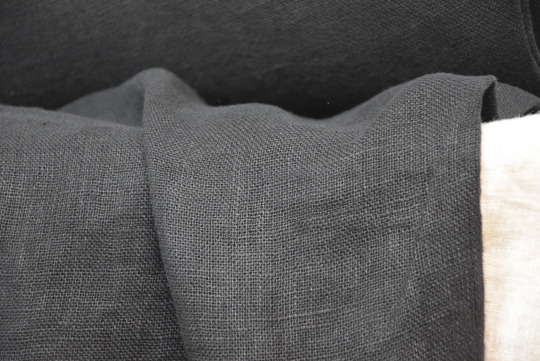
(Image source 1) [ID 1: a gray linen fabric with a tight weave.] / (Image source 2) [ID 2: a gray linen fabric with a loose weave.]
Polyester (to avoid):
Are your summer clothes making you ridiculously sweaty? Check the tag: you're probably wearing polyester.
Polyester is a synthetic fabric derived from petroleum: it's basically a plastic. It's strong, cheap, and stain resistant, which makes it a popular fabric. Even though a lot of summer clothes are made out of polyester, it's one of the worst fabrics to wear in summer.
Polyester is neither absorbent nor breathable, and captures heat. It traps sweat between your skin and your clothes, and it won't let you cool down. This leaves you feeling sticky and overheated. It can also cause static cling, which can be uncomfortable.
Not all synthetic fabrics are bad in summer: a lot of UV-blocking clothes are made of synthetics for example and can be a real life saver if you're sensitive to the sun. Try to avoid polyester if you can, though.
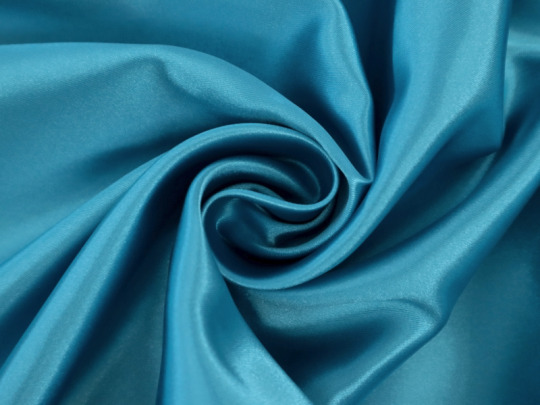
(Image source) [ID: close-up on a blue tightly woven polyester fabric that folds into a swirl at its centre.]
Cotton:
Cotton is a natural fibre that makes for a soft, durable, and breathable fabric. It allows air to circulate around your body which helps to keep you cool and get rid of sweat. It's a good basic choice.
Cotton has one downside: it's very absorbent, but takes a while to dry. If the weather's making you sweat excessively, the sweat can pool into the fabric of your cotton clothes. This will make them wet, resulting in visible sweat stains that can feel uncomfortable and will take a long time to dry.
If you can't stand how cotton feels, check out chambray weaves or bamboo textiles. They have similar properties to plain-weave cotton, but tend to be more sensory-friendly.
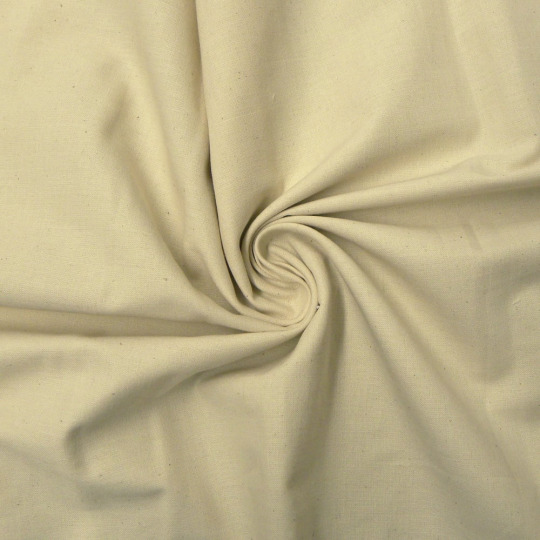
(Image source) [ID: close-up on a faded yellow tightly woven cotton fabric that folds into a swirl at its centre.]
Linen:
Linen is the absolute king of hot weather fabrics. It's strong, absorbent, dries quickly, and is very breathable. It cools you down, but won't make you feel sticky because any sweat it absorbs will evaporate fast.
I frequently layer multiple thin loose-fitting linen garments when it's hot. Loose layers allow for air to circulate between your clothes while protecting your skin from the sun. It almost functions as a wearable air-conditioner.
Note that linen is prone to wrinkling. If this bothers you, know that linen requires extra effort during laundry to avoid this.
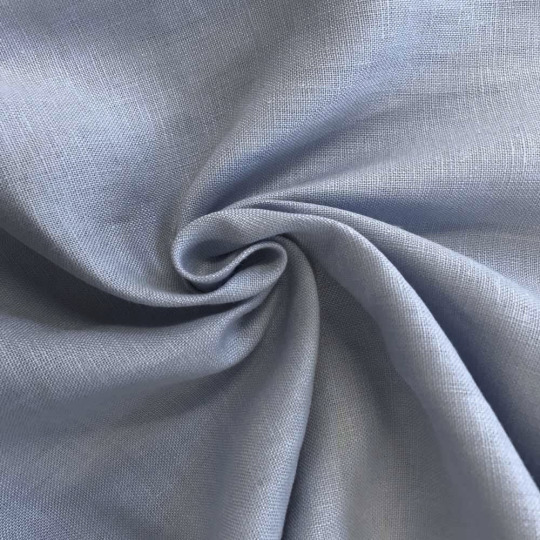
(Image source) [ID: close-up on a gray woven linen fabric that folds into a swirl at its centre.]
Silk:
Silk is yet another natural fibre that makes for a strong, quick-drying, and pretty breathable fabric. It's soft and cool to the touch, which makes it a great sensory choice.
Silk is not as breathable as cotton or linen, but dries very quickly. This means it might make you sweat more than cotton or linen does, but once the fabric's moist it will dry faster.
Note that sweat stains on silk tend to be pretty visible. Silk's also prone to static cling.
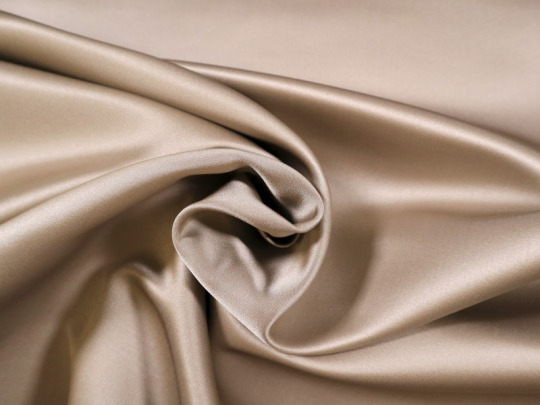
(Image source) [ID: close-up on a light brown tightly woven silk fabric that folds into a swirl at its centre.]
#wasteless crafts#fabric#summer#hot weather#sweat#fibres#silk#linen#polyester#cotton#chambray#bamboo#fabric types#fabric properties#clothes#fashion#keeping cool#heat waves#sunscreen#weather#thrifting#second hand shopping#fast fashion#slow fashion#sustainable fashion#uv blocking fabrics#tw cancer mention#tw skin cancer
2K notes
·
View notes